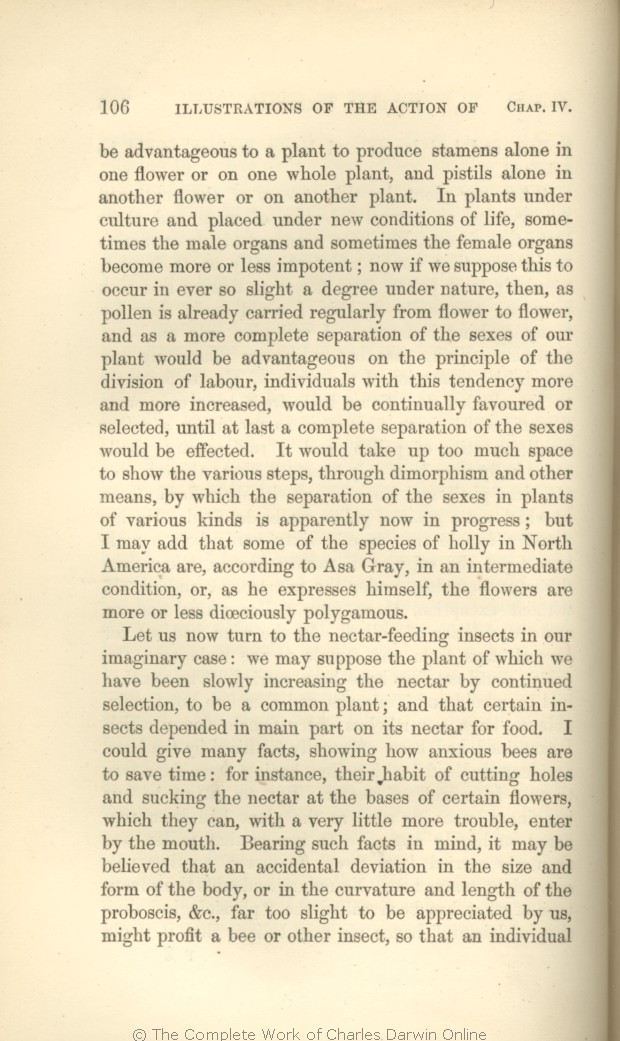be advantageous to a plant to produce stamens alone in one flower or on one whole plant, and pistils alone in another flower or on another plant. In plants under culture and placed under new conditions of life, sometimes the male organs and sometimes the female organs become more or less impotent; now if we suppose this to occur in ever so slight a degree under nature,
then, | then, 1866 1869 1872 | | then 1859 1860 1861 |
| would 1859 1860 1861 1866 | | might 1869 1872 |
| America 1866 1869 | | America, 1872 |
| intermediate 1866 1869 | | exactly intermediate 1872 |
| himself, the flowers 1866 |
| it, 1869 1872 |
|
|
Let us now turn to the nectar-feeding
insects | insects 1859 1860 1861 1866 | | insects: 1869 | | insects; 1872 |
| in our imaginary case: 1859 1860 1861 1866 |
| OMIT 1869 1872 |
| plant 1859 1860 1861 1866 | | plant, 1869 1872 |
| facts, 1859 1860 1861 1866 1869 | | facts 1872 |
| time: 1866 1869 1872 | | time; 1859 1860 1861 |
| they can, with a very little more trouble, 1859 1860 1861 1866 1869 |
| with a very little more trouble, they can 1872 |
| it may be believed that an accidental deviation 1866 |
| I can see no reason to doubt that an accidental deviation 1859 1860 1861 |
| it may be believed that under certain circumstances individual differences 1869 1872 |
| size and form 1859 1860 1861 1866 |
| curvature or length 1869 1872 |
| body, or in the curvature and length of the 1859 1860 1861 1866 |
| OMIT 1869 1872 |
| far 1859 1860 1861 1866 | far 1869 1872 |
|









